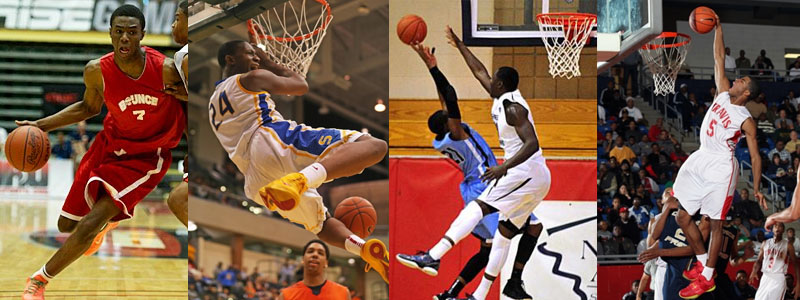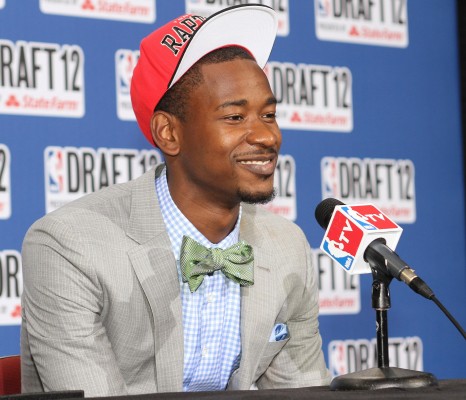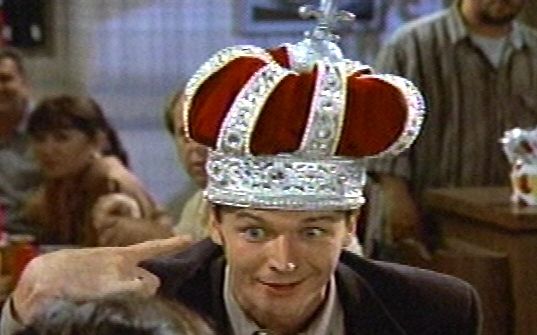First of all, I want to thank everyone for all the welcomes in the comments section for my premier article on the Raptors Republic. My goal is to create some good, intelligent conversations here, so I’ll do my best to respond to as many comments as I can. Emphasis on “intelligent”.
In my last article, I put forth the argument that the current path the Raptors are on was not one destined for anything but mediocrity and disappointment (so basically, the Raptors’ status quo). Keeping Colangelo and the current roster is simply not a good option for anyone with Championship hopes for the team. And with the Raptors going 11-17 since the Rudy Gay trade, it’s becoming more and more evident that staying the course might not even get the Raptors to the playoffs, in the near future. You can make all the excuses you want, but the fact remains this is a poorly constructed, massively overpriced team with too many “core” players who rarely play to their potential and have been too willing to roll over in games they should have competed.
Even PhdSteve changed his mind about staying the course on his latest podcast.
Of course, it’s easy to criticize and not offer solutions, so in this article, I put forth my argument of what they SHOULD do.
Now, before people start assuming this is going to be an article about tanking, let me reassure it’s not…completely.
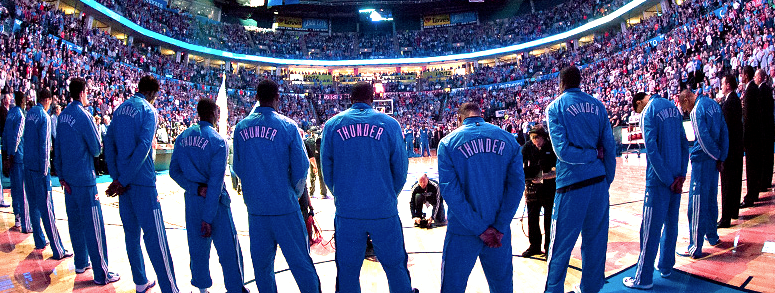
Again, taking inspiration from PhdSteve, on one of his previous podcasts he talked about the myth of the Oklahoma model. That you couldn’t copy it because of the luck involved in drafting guys like Russell Westbrook, James Harden and Serge Ibaka, as well as being able to land Kevin Durant. Well, it was certainly luck that they were able to land Durant with the second pick, but where I disagree completely is the luck he says was involved in drafting Westbrook, Harden and Ibaka, and especially when he talks about the Spurs drafting Tony Parker and Manu Ginobili. Oklahoma and San Antonio were able to draft their star players not due to luck, but because they have great GMs who make great decisions and have a great scouting department.
What both organizations have in common, apart from their excellent scouting, is good management. You can have great scouts, but ultimately, it’s up to management who to draft. Now I already discussed in the last article that the Raptors need new management, but they also need something else that both Oklahoma and San Antonio have: Elite players.
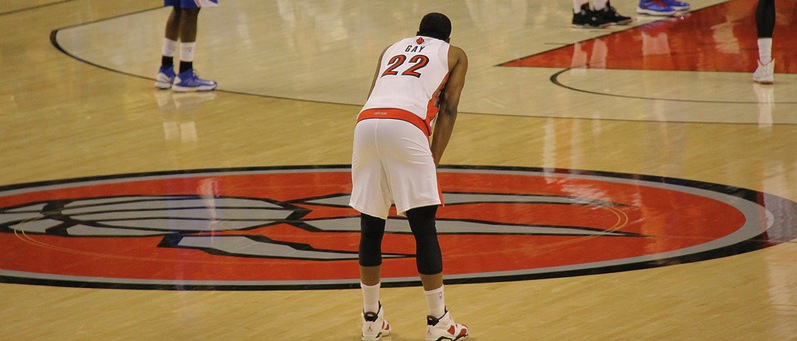
I don’t think anyone can seriously say that Rudy Gay is an elite player. Not with the mountain of evidence that says he’s not. A word of advice for Bryan Colangelo. Making your announcers say over and over again that Gay is an elite player doesn’t actually make it true, no matter what Joseph Goebbels says.
Again, it’s not that Gay is a bad player by any means. I think he gives too inconsistent an effort on both ends of the court, which causes problems, but if he’s your third guy, I think that’s okay. But he’s not getting paid like a third guy. Unfortunately, on the Raptors, he’s the Raptors #1 option.
On my own blog, I’ve already written why the draft is the best way for a team like Toronto to acquire an elite player, so I won’t go over it again here. I recycled enough of my old material in my last article.
Obviously, there has been a lot of talk among Raptor fans of wanting to try and get Andrew Wiggins, and rightly so. If he comes close to the potential that many are giving him, he’d be the saviour the Raptors have been desperately needing since Vince mentally left town. If you’re a Raptors fan, and you don’t know who Andrew Wiggins is, then I suggest watching this:
The problem, of course, is that you can’t bank on landing the top pick in the draft, no matter how bad you are. Ask just about any of the last place teams that have missed out on winning the lottery and landing a franchise player. The best example of this is Boston, who had the best chance to land Tim Duncan in the 1997 draft, but got the third pick, and drafted Chauncey Billups (who went on to a Hall of Fame career, but that career didn’t start for another 5 years in Detroit) instead. What followed were four more years in the lottery.
The 1997 draft was a one man show. After Tim Duncan was Keith Van Horn. I think you get the picture. That’s not, however, the case with the 2014 draft.
After Andrew Wiggins, the drop-off isn’t nearly as big if the Raptors miss out on the top pick. In fact, the beauty of the 2014 draft is that it can be compared in a lot of ways to the 2003 draft, one of the best draft classes in the last 20 years. Now, I’m not suggesting that Wiggins is the next LeBron, so let’s not jump to any unfounded conclusions.
But it wasn’t just Cleveland that made out big in that draft. Miami got themselves the second best player in the draft, an All-NBA First Teamer and lead Miami to it’s first Championship in 2006. Denver got a 4-time All-NBA player and Toronto got Chris Bosh.

Teams that miss out on Wiggins still have a chance at Jabari Parker, who has a similar game to Grant Hill (when he came out of Duke) and is even going to Hill’s alma mater. Parker might end up being better than Wiggins, although Wiggins has more upside. If you miss out on those two, there’s still Julius Randle, an athletic and strong power forward with NBA ready offensive skills and a willingness to compete on defense, and Andrew Harrison, a Russell Westbrook-clone who is a more natural PG. And Aaron Gordon, who has a Blake Griffin-like game and body, now is being looked at on the same level.
Now, some will argue that lots of guys have been high school phenoms and never made it big in the NBA. Felipe Lopez was one of the most highly recruited high school players in history, appearing on the cover of Sports Illustrated before playing one NCAA game. He played four years at Seton Hall St. John’s before being drafted 24th in the 1998 draft and lasted only four years in the league.
The difference is that those five would probably go be the top five in the 2013 draft, if they could, and both Wiggins and Parker could probably start for most of the teams in the league right now. These guys aren’t Kwame Brown. They have skills most NBA players don’t have.
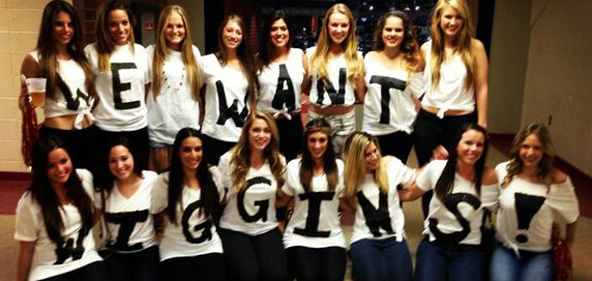
Basically you’re looking at, at least, four to five potential elite players from this draft, and possibly more. If you’re going to tank to get an elite player, next year is the time to do it. And that’s exactly what I’d recommend the Raptors do.
I can understand the argument not to tank if there’s only one franchise altering player in the draft, or if you’ve already got that player or your team is in a good situation. But the Raptors are a mess. They are a lottery team without an All Star, yet starting next season the team’s top three scorers, and also three of the team’s most inefficient scorers, will be making a combined $37.3 million. If the Raptors sign a player to the MLE this summer, it will put them into the luxury tax.
Of course, it’s easy to gut your team and tank. The difficult part is figuring out how to do it well and what to do next.
Gutting the team obviously doesn’t mean getting rid of everyone, because you still need players. And the idea is not to get clear salary, because that’s pointless when you’re rebuilding. So who stays and who goes?
THE UNTOUCHABLES
In part one, I said Jonas Valanciunas was the Raptor’s most important player, and he’s the only player who’s in this category. Legit 2-way centers who can run the floor and play hard are such a rarity in this league that you’d have to be nuts to trade him away. While he’s an untouchable, he’s not good enough, at this point in his career, to make much of an impact in the win column and hurt your chances of getting a top pick.
LOW-COST BUILDING BLOCKS
A team trying to tank obviously is rebuilding, and rebuilding teams need young players. That means guys on their rookie contracts who still have decent potential. On the Raptors, there are just two of them, Terrence Ross and Quincy Acy. If you need to package them in a trade to get something done, it’s not a big deal, but if possible you hold on to them.
LOCKER ROOM VETERANS
Just because you’re tanking, doesn’t mean you don’t want your young guys to have good influences around them that can give you some minutes. They’re good enough to play 15-20 mpg, but not good enough to make an impact in the win column. Plus, none of these guys have any trade value, so you might as well keep them. Aaron Gray and John Lucas are those guys for the Raptors. Both have contracts that go for one more season.
LOW VALUE-BIG CONTRACT
These are guys who are overpaid and who really aren’t worth trying to trade. Landry Fields isn’t worth his contract but would be perfect guy to start at small forward. He’s the type of guy who is more valuable the more talent he has around him, and he’s not going to have a lot of talent around him. But he could be a good role player down the road. Linas Kleiza may not ever player again, due to bad knees. His contract ends after next season, so it’s not a problem.
HATE TO SEE YOU GO
Amir Johnson is a guy you love having on your team. He’s a great teammate who will do anything to help the team and always makes a positive impact when he’s on the floor. And his contract is actually pretty good, despite what early critics said (I was not one of them). Unfortunately, if you’re trying to tank, he’s the kind of player that will not help your cause. If I was the GM, I’d sit him down, lay my cards on the table and ask him what he wants. I think you owe a guy like Amir that. Most likely, he won’t want to lose for another few years, and you find a playoff team who can send you a first rounder and/or young prospect for him. And then you see if you can sign him back when his contract is done.
HIGH VALUE-GOOD CONTRACT
These are guys who you don’t want to keep, but should have good value. Unfortunately, about the only guy that describes on the Raptors is Kyle Lowry. I doubt you’d be able to get the same value for him that you gave up (lottery pick), because he’s disappointed as a starter, but he’s definitely an asset. You might also need him to move one of the Raptors more difficult to trade players.
HIGH VALUE-BAD CONTRACT
If Rudy Gay and DeMar DeRozan’s contract were cut by a third, then they’d be good assets that you could probably get a lottery pick for. Unfortunately, their contracts make them difficult to move. Ironically, Gay is probably the more difficult player to move, despite him actually have a pretty good impact in the win column (decent, but not great). That impact makes him absolutely necessary to move for a team that wants to lose.
DeRozan has a negligible impact on the court, so it’s not necessary to move him if it becomes to difficult to find a taker. Plus he’s a hard worker, so that’s good to have around the young players.
DON’T BOTHER WRITING
Andrea Bargnani has one of the worst valued contracts in the league and he’s still owed $23 million after this season. Considering how little of a positive impact he makes, he could actually help a team that wants to lose. But with his history and how much of a dark cloud he is over the franchise, you have to cut ties with him. If you can’t find a trade partner that won’t make you take someone like Carlos Boozer back, then you bite the bullet and amnesty him.
What Now?
Now that you know who you’re going to keep and who you’re not, you need to figure out how you’re going to do it and how you’re going to fill back up the roster. While it might seem reasonable to suggest that if you want to tank, you should go out and get a bunch of bad players, that’s not necessarily the best move, especially considering you don’t want to create a toxic atmosphere for guys like Valanciunas, Ross and Acy.
Ideally, what you want is to find a good mixture of young, undervalued prospects who could be either good building blocks for the future, or assets whose value will go up, and semi-useful veterans who are good in the locker room and can give you some decent minutes, if need be. The trick is to not have too many veterans so that a coach will not play and develop the younger players, trying to win a few more games.
Now, it’s been suggested by some that it would be very difficult to trade Gay and DeRozan because of their contracts. I believe that depends on what you expect back. Gay’s contract is certainly cumbersome. But we’ve seen Atlanta trade Joe Johnson for expiring contracts and a couple of picks. And we do know that other teams were interested in trading for Gay before Colangelo swooped in and did it. Toronto might need to take back a long term contract or two, but since cap space is not the goal here, that’s not a problem.
First up, target some of the young players who haven’t developed as expected, and who may not be getting the chance they need. Players like Kendall Marshall, Terrence Jones, Derrick Williams, Alec Burks and even a guy like Evan Turner, who has been in the league a few years, but has never been in a system, or surrounded by players, that complimented him.
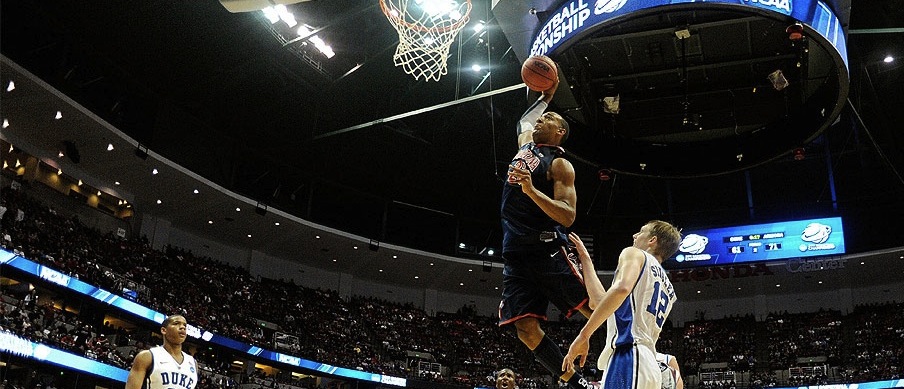
An example of a trade I would try would be trading DeRozan to Minnesota (who apparently has coveted him) for Derrick Williams and Like Ridnour. Now, I’m not suggesting Minnesota would accept this deal (I’m guessing they wouldn’t, as is), but this is the type of deal I would be looking for.
As usual, I’ve gone a little long, so I will end it here and finish up in the next column, which will be posted later this afternoon. In that one, I’ll discuss how the Raptors should try and rebuild.
AROUND THE LEAGUE
– Am I the only one who couldn’t watch the Duke-Louisville game after Kevin Ware went down with one of the most gruesome sports injuries in television history? I remember seeing him lying on the side of the court, wondering why the announcers hadn’t mentioned it, and then when it became evident the extent of the injury, I couldn’t watch. I’m definitely not one of those who likes to watch injuries. I’ve had too many of my own and even a sprained ankle will cause me to turn my head, as if afraid to give my body any ideas.
I fast forwarded (I always DVR basketball games) until they started playing again but I couldn’t stop thinking about it and I switched to watching the Raptors-Hawks game, an only slightly less gruesome experience.
– As someone who personally lived through the Vancouver Grizzlies years, saw first hand what he did to the organization and heard from an insider friend how he carried on while in charge of the Grizzlies, I think I’m quite qualified to warn every NBA team out there to stay as far away from Stu Jackson as possible, as he apparently becomes interested in moving back into a team’s front office.
– Truth be told, the Spurs have been one of my favourite non-Canadian teams since before Tim Duncan was drafted. And this article on how the Spurs improved their defense this year is incredibly interesting, but not just to Spurs fans. One of the interesting things is how open Gregg Popovich is to changing his coaching strategy based on stats collected through analytics. Considering how reluctant coaches like Dwane Casey and Doug Collins are to use analytics, it really makes you appreciate how progressive Popovich is despite him being so old school.

